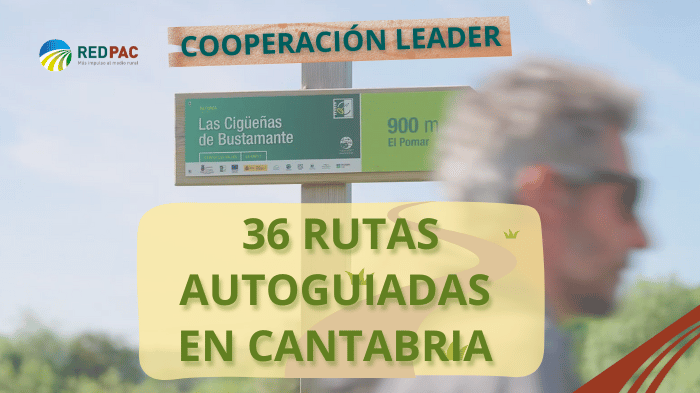
01 de July de 2024
The routes pass through landscapes that encompass the full range of natural aspects, landscapes, climates, and flora and fauna found in Cantabria.
- Under the 'Naturea Cantabria' brand, the 5 Local Action Groups of Cantabria have designed 36 routes within the Network of Protected Natural Areas
- To do this, they have created a system with a unique design and informative brochures so that hikers can explore the trails on their own.
The natural, geographic, cultural, and economic heritage of rural areas is incredibly rich, but if spaces, infrastructure, and ways of communicating it aren't created, it won't be known, and what isn't known won't be cared for. To raise awareness and allow people to visit these places in Cantabria, the five Local Action Groups ( LAGs ) in the autonomous community have joined forces to create a cooperative project unlike anything seen in many years.
Under the banner of 'Naturea Cantabria' —a program to promote the maintenance of public use—and in collaboration with the Cantabrian Rural Development Network , the LAGs have developed a project of 36 self-guided routes through the area. These routes, many of them new and others renovated and expanded, have been designed by the LEADER groups and, for the most part, standardized.
The main challenge of the project, which began in 2020 in the midst of the pandemic, was to standardize the signage, markings, and markings of all routes, thus facilitating visitor access and ensuring their independence during their visits.
What are the routes like?
The routes pass through varied landscapes of Cantabria which, as the manager of the GAL Liébana explains to the PAC Network –project coordinator–, Irene Díaz Casado, “contain the best and most attractive and representative environments and biodiversity of Cantabria,” so the 36 routes cover the full variety of natural aspects, landscapes, climates, and flora and fauna that exist in the autonomous community.
The routes are simple , of medium difficulty, circular, accessible from their origins by car, passable with leashed pets, and take varying lengths, averaging about 3 or 4 hours. The GALs have ensured that the totems, information leaflets, and interpretive resources have the same aesthetic in all areas, and the same type of useful information, which facilitates the understanding and repetition of the experience by visitors to these resources.
"Our idea is to do more, but we had to start with the most emblematic [routes]," explains Díaz Casado, who adds that those interested can access the information brochures online , at Tourist Offices, at the headquarters of the Cantabrian GALs, and at the fairs they regularly attend.
An immediate success
The routes cover almost 400 kilometers of surface in areas considered as Protected natural spaces . These trails, which opened in November 2023, have been used by 19,760 people between January and May of this year, a figure achieved thanks to the innovative approach they have given to the project, through the use of digital technologies.
"We're very happy," says the manager. "On some routes, we never thought there would be so many people. There are towns where this has been a real driving force." After all, "when visitors finish the route, they have a soft drink and sandwich at the town bar" or even stay in areas that were previously rarely visited. For Díaz Casado, this project is historic because "it addresses a demand from the tourism sector." The project called for standardizing route markings and taking the tourism sector into account, and "this has proven to be strategic for rural development and a diversifying economic activity," something she values as central to the LEADER approach. Finally, she highlights the "ethnographic and cultural heritage of Cantabria" and hopes that the experience "will serve to spread to other places" and continue to expand within the same autonomous community.
Partners and financing
The self-guided routes project is coordinated by the Liébana GAL , which executes it as a LEADER cooperation project with the Asón-Agüera-Trasmiera , Campoo-Los Valles , Saja-Nansa and Valles Pasiegos GALs , in collaboration with the Cantabrian Rural Development Network.
The project has 226,500 euros in funding from the Ministry of Rural Development, Livestock, Fisheries, Food, and Environment of the Government of Cantabria.











